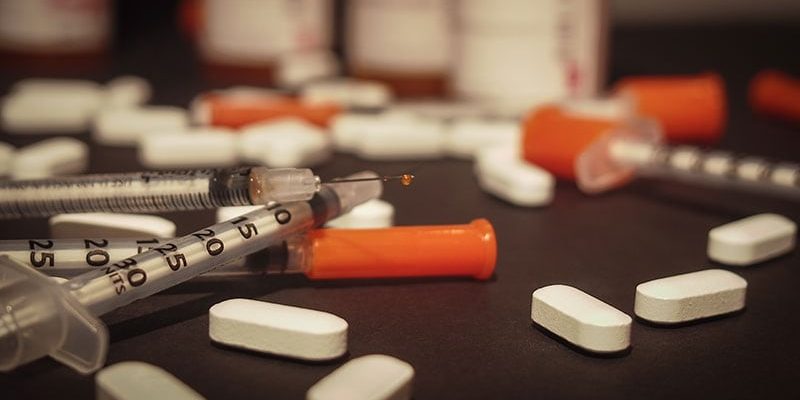The spread of fentanyl and the animal tranquilizer xylazine is an “emerging threat” to the United States, the White House said Wednesday, which allows it to quickly develop a response plan to reduce supplies of the illicit drugs, improve testing, and provide more treatment.
The action comes on the heels of a U.S. Drug Enforcement Administration warning about a sharp uptick in trafficking and overdoses of fentanyl combined with what is more commonly known as “tranq” or “zombie drug.” The rapid rise in overdoses, severe health consequences such as deep skin wounds that do not heal, and deaths led to the new warning from the White House Office of National Drug Control Policy.
“As a physician, I am deeply troubled about the devastating impact of the fentanyl-xylazine combination, and as President Biden’s drug policy advisor, I am immensely concerned about what this threat means for the nation,” said Rahul Gupta, MD, MPH, director of the drug policy office, in a statement.
Gupta cited DEA data that shows that from 2020 to 2021, forensic laboratory identifications of xylazine rose across the U.S., especially in the South (193%) and the West (112%). DEA statistics also showed that xylazine-positive overdose deaths increased by 1,127% in the South, 750% in the West, more than 500% in the Midwest, and more than 100% in the Northeast.
The 2018 SUPPORT Act gave the Drug Policy Office new powers to designate emerging drug threats. A special committee that met throughout 2019 and 2020 determined the criteria for when a substance is a significant threat to the public.
This is the first time these powers have been used. Gupta said a drug policy task force will start meeting soon to come up with a plan that would improve testing for xylazine — as it is not picked up in routine drug tests; come up with treatment and supportive care protocols; reduce the illicit xylazine supply; and support rapid research that might, for instance, study the interactions between xylazine and fentanyl.
It is unclear how much money will be devoted to the effort, but in March, as part of the fiscal 2024 budget, the Biden administration requested $46.1 billion to support its drug control policies, including combating fentanyl. That is $2.3 billion more than Congress approved for 2023.
Congress has also taken notice. A bipartisan group of Senate and House members in late March introduced the Combating Illicit Xylazine Act, which would make the drug a controlled substance. That would give the DEA increased authority to track and regulate it.
“This bipartisan legislation will ensure the DEA and local law enforcement have the tools they need to get xylazine off our streets while protecting its important use as a veterinary tranquilizer,” said Sen. Catherine Cortez Masto (D-Nevada) in a statement.
The FDA in March issued an import alert for xylazine, which gives it the power to detain the raw ingredients or bulk quantities of the drug if the shipments are suspected to be illegal. Xylazine was first approved by the FDA in 1972 as a sedative and analgesic for use only in animals.
In November, the FDA notified health care professionals that the overdose agent naloxone is unlikely to reverse a xylazine-related overdose as the animal tranquilizer is not an opioid.
Sources:
U.S. Drug Enforcement Administration: “DEA Reports Widespread Threat of Fentanyl Mixed with Xylazine,” “The Growing Threat of Xylazine and its Mixture with Illicit Drugs.”
The White House: “Biden-Harris Administration Designates Fentanyl Combined with Xylazine as an Emerging Threat to the United States.”
Congress.gov: “H.R.6 – SUPPORT for Patients and Communities Act.”
U.S. Sen. Catherine Cortez Masto: “Cortez Masto, Grassley & Hassan Introduce Legislation to Crack Down On Xylazine.”
FDA: “FDA warns about the risk of xylazine exposure in humans.”
Source: Read Full Article
